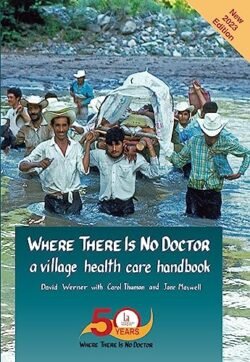“Where There Is No Doctor: A Village Health Care Handbook” by David Werner, first published in 1977, is widely recognized as one of the most important health care manuals for communities in remote and underserved areas around the world. This comprehensive guide provides practical, easily understood information on how to diagnose, treat, and prevent common diseases and injuries when access to professional medical care is limited or unavailable. It also emphasizes the importance of community health, nutrition, sanitation, and preventive measures to improve overall well-being.
The handbook covers a broad range of topics, from maternal and child health to the treatment of infectious diseases, dental care, and the management of chronic conditions, making it an invaluable resource for community health workers, educators, and laypeople alike. Its simple language and clear illustrations make complex medical concepts accessible to those with little or no formal medical training.
Character Analysis
- "Where There Is No Doctor" is structured to be user-friendly, with chapters organized by symptoms and conditions for easy reference. The book encourages community involvement in health care and the empowerment of individuals to take active roles in their own health management. It also provides guidance on how to use and store common medications, create basic medical supplies, and collaborate effectively with local health professionals when available.
Themes and Analysis
- Empowerment through Knowledge: A key theme of the handbook is empowering individuals and communities with the knowledge to address their own health care needs, fostering self-reliance and resilience.
- Prevention and Public Health: The book emphasizes preventive care and public health measures as foundational to community well-being, advocating for clean water, proper sanitation, and vaccination.
- Cultural Sensitivity and Community Participation: Recognizing the diversity of cultures and health practices among its readers, the handbook stresses the importance of cultural sensitivity and the inclusion of community members in health decision-making processes.
“Where There Is No Doctor: A Village Health Care Handbook” has become an essential tool in global health, widely used in developing countries and in contexts where health care resources are scarce. Its practical approach to medical care, combined with a deep understanding of the social and environmental determinants of health, has made it a cornerstone resource for those working to improve health outcomes in underserved communities. The handbook’s ongoing updates and translations into multiple languages reflect its enduring relevance and commitment to accessible health care education for all.
If the summary caught your interest,
Consider reading the full book on AbeBooks.
Explore this book on AbeBooks
